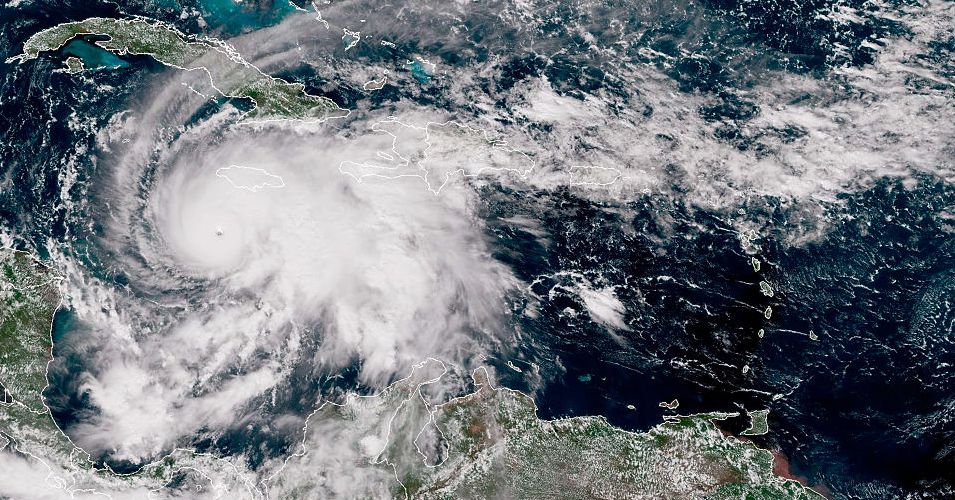Meteorologists who have spent the past few days monitoring the rapid development of Hurricane Melissa in the Atlantic Ocean are sounding the alarm about the storm, which is set to make landfall in Jamaica today as a Category 5 hurricane. The sustained—and growing—intensity of the storm is remarkable, experts say, and has the makings of a historic hurricane.
“When I look at the cloud pattern, I will tell you as a meteorologist and professional—and a person—it is beautiful, but it is terrifying,” says Sean Sublette, a meteorologist based in Virginia. “I know what is underneath those clouds.”
There are a few different ways to measure the strength of hurricanes. One is by air pressure: the lower the pressure, the stronger the storm. Early Tuesday morning, as it approached Jamaica, Melissa was measuring a minimum pressure of 901 millibars (mb)—lower than Hurricane Katrina’s peak low pressure of 902 mb, and the lowest pressure ever recorded in a hurricane this late in the year, according to CSU meteorologist Philip Klotzbach.
Incredibly, as of Tuesday morning, Melissa wasn’t done intensifying. At 10 am, the National Weather Service posted an update measuring the storm’s pressure at 892 mb. If it makes landfall at this pressure, it would be tied with the catastrophic 1935 Labor Day hurricane, which hit Florida, as the most intense hurricane by pressure to make landfall.
“That record’s been in place for 90 years now,” says Brian McNoldy, a senior research associate at the University of Miami’s Rosenstiel School of Marine, Atmospheric, and Earth Science. “It would be a pretty big deal if that fell.”
The pressure dropping so much as a hurricane approaches land—especially around elevated ground—is “really remarkable,” McNoldy says. “Normally it would start to feel a mountainous island, like Jamaica, and it would kind of interrupt it a little and start to weaken it. But it’s actually still intensifying right now.”
A second way of measuring hurricanes is by wind speed; Melissa has also startled meteorologists with its strength here, as well as the speed at which it intensified. Wind speeds inside Melissa measured just 70 mph on Saturday as the storm formed in the Atlantic basin, lower than the 74 mph of the mildest Category 1 storms. However, they had quickly jumped to 140 mph—Category 4 strength—just 24 hours later. Melissa’s winds kept on intensifying through Monday and Tuesday. As of 10am Tuesday, it had maximum sustained winds of 185 mph.
“It’s extremely rare to have a storm rapidly intensify when it’s already really intense,” says McNoldy. “You usually see rapid intensification happen when it’s a tropical storm or a Category 1, 2 hurricane. That’s when it is very common to happen. But not when it’s already at the upper end of intensity.”


